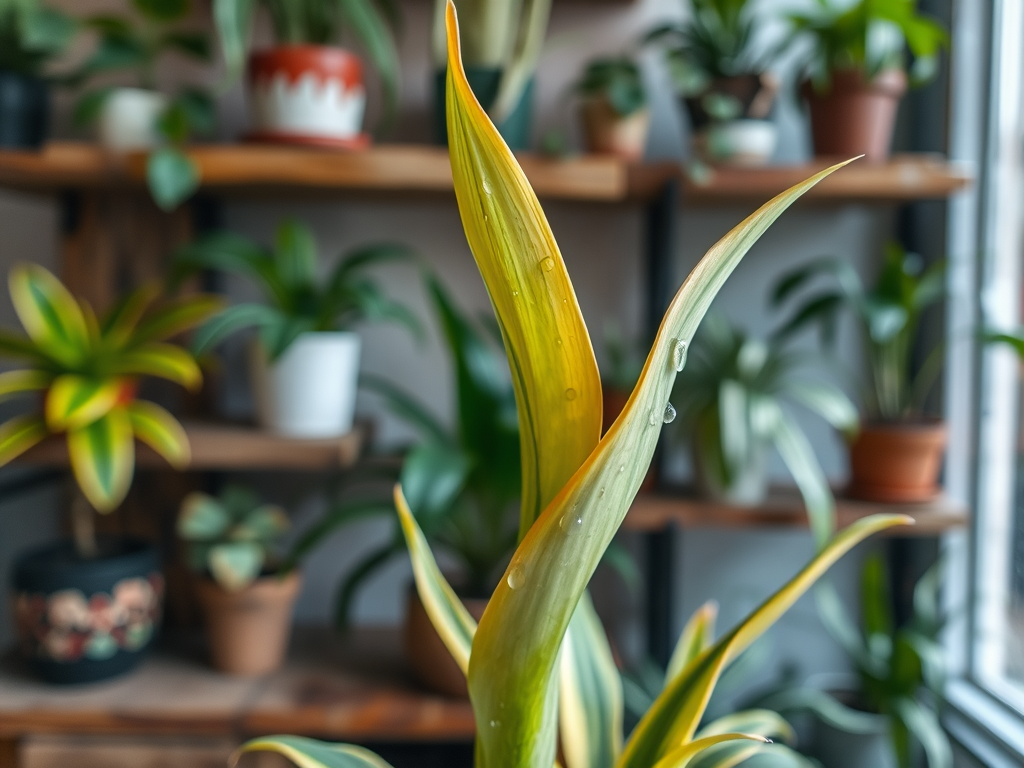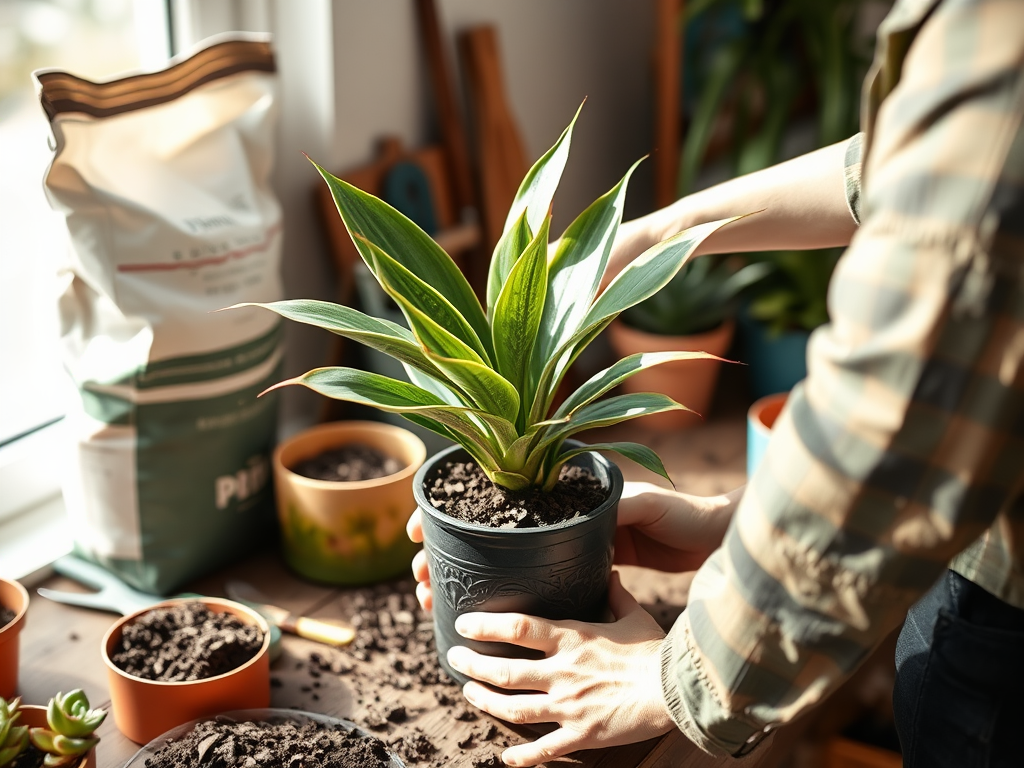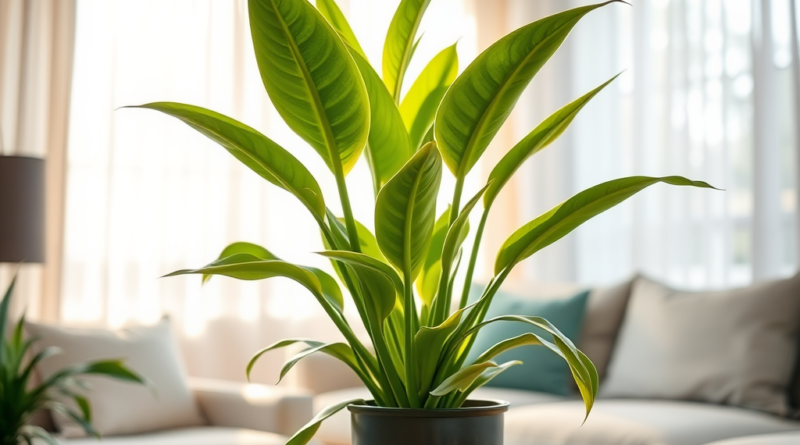How to Revive a Dying Snake Plant: Troubleshooting Tips
If you have a snake plant that seems to be on its last legs, don’t lose hope just yet. These resilient plants are known for their toughness, but even the hardiest species can succumb to neglect or environmental issues. A dying snake plant is a call to action and an opportunity to practice your plant-care skills. By identifying what’s causing the stress, you can implement effective strategies to bring your plant back to life. Whether it’s yellowing leaves, a wilting appearance, or overall sluggish growth, addressing these symptoms with precise care can lead to recovery. In this guide, we’ll explore the essential troubleshooting tips that will help you revive your beloved snake plant.
To begin, it’s crucial to understand what your snake plant requires in terms of care. These plants, also known as Sansevieria, thrive in environments that mimic their natural habitat, typically characterized by warmth and indirect light. However, despite their forgiving nature, maintaining the balance of light, water, and nutrients is vital. A dying snake plant may exhibit telltale signs that indicate underlying issues. You may not realize it, but with a bit of knowledge, you can easily decode these signals and offer the necessary solutions.
Understanding the Snake Plant’s Needs

The first step towards reviving a sick snake plant is to have a clear understanding of its basic needs. Depending on its surrounding environment, the light and water conditions can vary significantly. Snake plants generally prefer low to bright indirect light, making them perfect candidates for a variety of indoor spaces. However, too much direct sunlight can lead to sunburned leaves, which in turn can contribute to the plant’s decline. Similarly, when it comes to watering, it is essential to find that sweet spot; overwatering can drown the roots while underwatering can dry out the plant.
Light Requirements
Assessing your snake plant’s light exposure is the first move in the troubleshooting process. Ideal locations would be where your snake plant can enjoy bright but indirect light, such as near a window covered with sheer curtains. If the leaves are turning brown or yellow, reconsider the light conditions your plant is exposed to. Transitioning the plant to a more suitable area may be warranted. By observing the growth, you can adjust the placement as needed.
Watering Practices
Next, let’s dive into watering practices. Overwatering is one of the primary culprits behind a dying snake plant. To determine if you might be drowning your plant, consider the texture of the soil. If it’s consistently wet, it’s time to ease up on the watering. On the other hand, if the soil feels too dry and the leaves are crisp, your plant could be thirsty. Understanding these nuances will enable you to adopt an effective watering strategy.
Identifying Common Problems

Recognizing the signs of distress is essential for reviving a dying snake plant. A few key indicators will help you identify underlying issues before they spiral out of control. Once you pinpoint the problem, the next steps become clear, facilitating a much-needed recovery. Let’s explore some common symptoms that warrant your attention.
- Yellowing leaves can indicate overwatering or insufficient light.
- Wilting or drooping leaves suggest underwatering or potential pest damage.
- Soft, mushy leaves are often a sign of root rot due to excessive moisture.
Yellowing is often the first sign that something isn’t right. If you notice the leaves turning yellow, evaluate your watering practices and light conditions. It’s crucial to distinguish between these two as their solutions differ. Often, the issue may stem from simple negligence or inconsistent care. Addressing it early will usually lead to a quicker recovery.
Troubleshooting Techniques
Once you’ve identified the problem, it’s time to take actionable steps to revive your plant. Implementing effective troubleshooting techniques can turn the situation around and enhance your plant’s health. Below, we outline a few methods to consider.
| Issue | Potential Cause | Solution |
|---|---|---|
| Yellowing Leaves | Overwatering or insufficient light | Adjust watering schedule and relocate to a brighter spot |
| Wilting Leaves | Underwatering or pest damage | Thoroughly water and check for pests |
| Soft, Mushy Leafs | Root rot | Repot in fresh, well-draining soil |
By implementing these strategies, you can address the root causes effectively. If overwatering is suspected, reducing the frequency of your watering while ensuring good drainage can work wonders. Conversely, if there’s underwatering, you should hydrate thoroughly but let the plant dry out in-between intervals to avoid creating a balance of moisture. Finding the right light for your plant can also yield significant improvements in its vitality.
Invigorating Your Snake Plant
After resolving the immediate troubles, consider additional actions to invigorate your snake plant and promote new growth. Implementing these techniques will speed up recovery and rejuvenate the overall appearance of your plant.
Fertilization
During the growing season, using a diluted, balanced fertilizer can promote new growth and vitality. However, only fertilize if the plant shows signs of recovery. Over-fertilizing can cause additional stress, so moderation is key. Always follow the application guidelines according to the product you choose. Once your snake plant begins to show improvement, it may flourish under the right nutrient-infusion strategies.
Repotting
If root rot is suspected, repotting the snake plant in fresh soil becomes essential. This step allows you to remove damaged roots and restore the plant to a suitable growing environment. Select well-draining potting soil and a pot that allows for adequate drainage. The repotting process may seem daunting, but it can offer a new lease on life for your plant.
Conclusion
Reviving a dying snake plant requires patience, observation, and the right care techniques. By understanding its needs and common issues, you can successfully restore the health of your plant. Remember to monitor light exposure, watering frequency, and nutrient delivery to maintain a thriving indoor landscape. With diligence and attention, you can have a lush, vibrant snake plant that enhances your living space.
Frequently Asked Questions
- How often should I water my snake plant? Water your snake plant every 2-6 weeks, allowing the soil to dry completely between waterings.
- What causes yellow leaves on a snake plant? Yellow leaves may result from overwatering or insufficient light.
- Can I use regular potting soil for my snake plant? Yes, but it’s best to use a well-draining potting mix or amend regular soil with perlite to improve drainage.
- Is it normal for snake plants to lose lower leaves? Yes, lower leaves may die off as the plant grows, but ensure that the upper leaves appear healthy.
- How can I tell if my snake plant is getting too much sun? If you notice scorched or brown tips on leaves, it may be receiving too much direct sunlight. Move it to a spot with indirect light.
